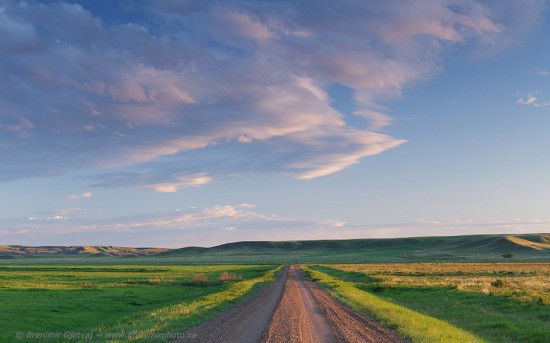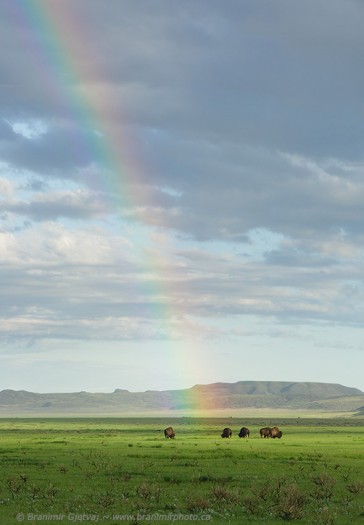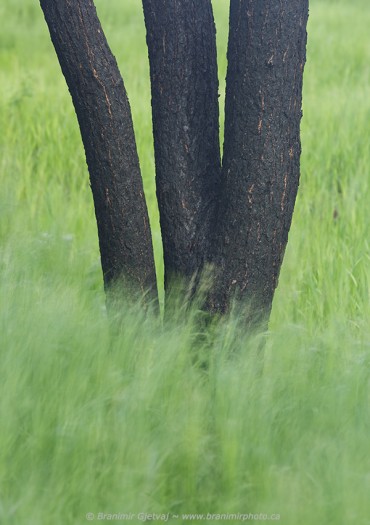The Grasslands National Park photo tour went well. The weather was relatively cooperative and we managed to capture a few great images. I will post a few samples later this week.
Prairie in the Park is recovering very fast after the massive wildfire that swept through the Park in April of this year. Early May was drier than normal, but heavy rains arrived at the end of the month. Temperatures were below average and rainfall was well above average over the first two weeks of June; many areas of Saskatchewan have received more than 150% of normal amount of rain. This might explain why the wildflowers were a bit delayed this year. We might see more flowers later on in June and early July.

Early morning fog in Frenchman River valley. The air was saturated with moisture and I was lucky enough to be able to photograph the valley enveloped in fog. Conditions like this are usually more frequent in August when there is a large difference between daytime and nighttime air temperatures.
Vegetation in burned area has recovered rapidly and the Frenchman River valley looks incredibly lush and green. Along the Ecotour road, deer and bison can frequently be seen feeding on new, nutritious grass. In the image below it is possible to see that grass on the left-hand side of the road (south-west) was burned and had no residual dry plant material. The new growth is lush and green. Prairie on the right-hand side was not affected by the wildfire and has much more dead grass (brown spots in the image).

View north along the Ecotour road in West Block of Grasslands NP. The road was used as a fire guard during the April wildfire.
Regrown areas have the best quality forage and attract many grazers. Actually, bison were seen looking for food in charred areas immediately after the fire. First Nations frequently set the prairie on fire to attract bison to certain areas where it was easier to catch them for food. The practice is used today to restore the bison populations.
Prairie wildfire did change the affected habitat. Some of the tree species were heavily damaged and will not recover – we will have to wait for new saplings to emerge. Grass species benefited from the fire and are recovering with amazing vigour. Forbs (like sage and wildflowers) are a bit slower to return. Controlled fires can help in suppressing invasive species and are used in prairie management. Fires help by removing thatch (dead plant material), stimulating plant growth, and by attracting grazers. Control measures of invasive plant species include a combination of prescribed fires and grazing; Parks Canada is bringing in cattle to graze in areas that were heavily infested with the crested wheatgrass. I observed cows selectively eating seed heads of this invasive species, thus helping control the abundance of weeds.
The large area of unburned prairie on land surrounding the burnt patch served as a refuge for the fire-sensitive species. They will quickly re-colonize the land affected by the wildfire over the next few years. Mosaic of habitat changes brought in by the large wildfire of 2013 will help enhance biodiversity of the area. The Grasslands National Park will be even more beautiful and attractive to hikers and photographers venturing into this remote part of Saskatchewan.




